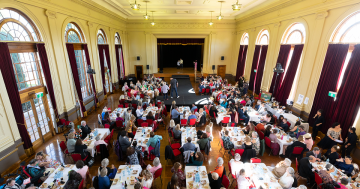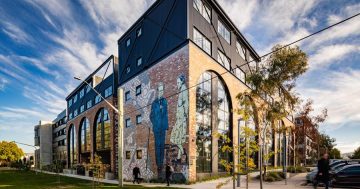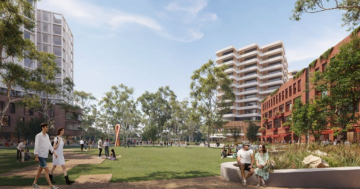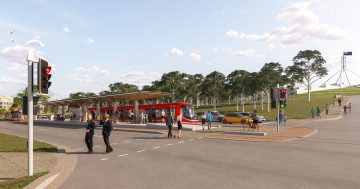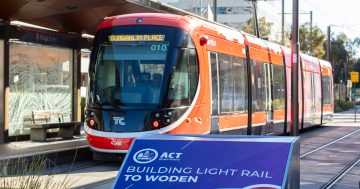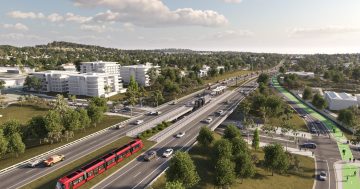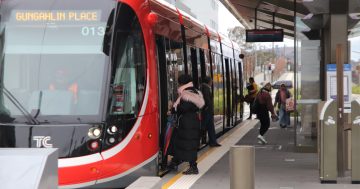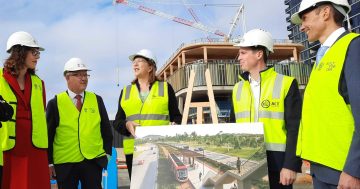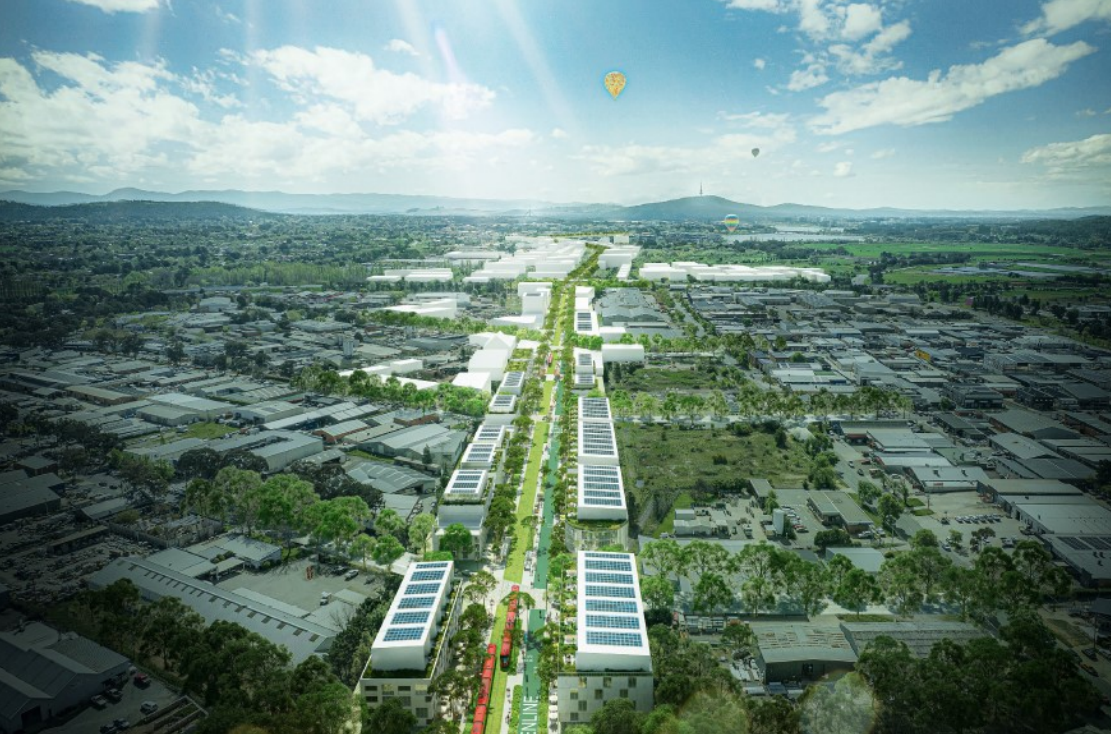
The Greenline concept along the existing heavy rail corridor, looking towards the city. Photos: Stewart Architecture.
A section of a future light rail link to Fyshwick would be Canberra’s first carless avenue with bicycle lanes and pedestrian paths alongside under a visionary urban renewal plan unveiled by the Fyshwick Business Association.
The high-level concept plan developed by Stewart Architecture would be paid for through the uplift in the value of land along a 4 km stretch of the existing rail corridor from the Kingston Railway Station, which would be moved to the edge of Fyshwick and become a multi-modal transit hub befitting the national capital.
The land, conservatively valued at $570 million, would be developed for high-density housing up to about five storeys, and ground-floor retail and commercial uses.
The plan was launched yesterday (17 November) at the Capital Brewing facility in the innovative Dairy Road precinct.
It calls for a light rail leg through Barton and Kingston along Wentworth Avenue that then proceeds along the existing rail corridor into Fyshwick and the interchange, continuing to Canberra Airport in a loop back towards the city and the Parliamentary Triangle.
The heavy rail corridor – 80-metres wide at its narrowest – would be wide enough for light rail, a cycle way and pedestrian paths, as well as development along both sides, mainly concentrated near the stops.

The loop route via Canberra Airport as envisaged in the plan.
FBA president Rob Evans said the Eastwick Greenline Light Rail and Active Travel Corridor Concept plan had been in the works for 18 months and had been positively received by government, industry and the community.
Mr Evans said the plan would connect the “string of pearls” in the inner south – Manuka Oval, the coming Kingston Arts Precinct, Kingston Foreshore, the soon-to-be-developed East Lake, Jerrabomberra Wetlands, Fyshwick Markets, CIT Fyshwick, Dairy Road, central and east Fyshwick, and then on to Canberra Airport and possibly Queanbeyan.
It would also provide clean and safe transport options to Fyshwick.
He said the ACT Government wasn’t being ambitious enough with light rail, saying one stage every decade was way too long to wait.
“The beauty of our Eastwick Greenline concept is that the land is going to uplift and could go a long way to paying for it,” Mr Evans said.
He said $570 million was a sizeable deposit on an infrastructure project where half the route was already formed.
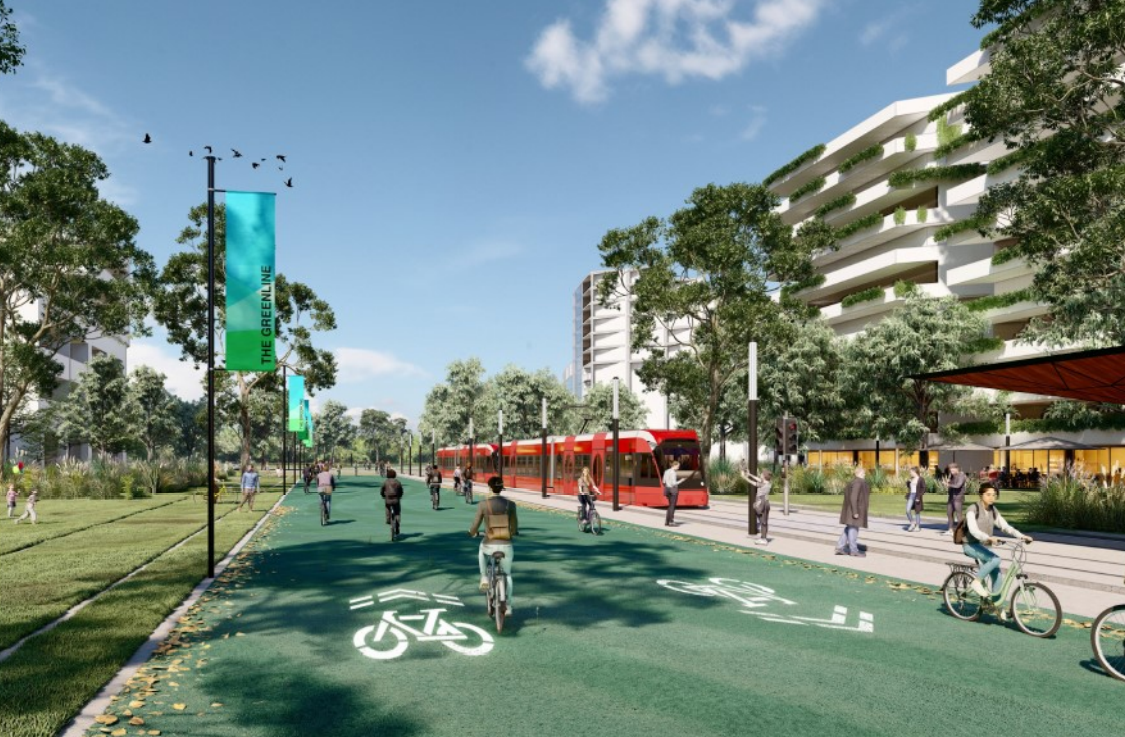
The view from the current site of the Kingston Railway Station. Photos: Stewart Architecture.
Stewart Architecture’s Felicity Stewart said the idea of green corridors and linear parks was taking off in cities around the world, such as New York with its High Line, and Canberra could be a pioneer in Australia.
“Now is the time for big ideas as we face an uncertain future with climate change and the huge challenges that presents,” she said.
“And Canberra is uniquely positioned to tackle that problem. Canberra is spread out and there is space to make dramatic changes in the landscape.”
Ms Stewart said the hardly used rail corridor was a hostile and barren place, but it was incredibly close to the centre of Canberra and had huge potential to be rethought.
“This is really as good as it gets in terms of transit-oriented development,” she said.
“We do think we can unlock a series of very exciting connected precincts that brings together culture, a natural habitat like the Jerrabomberra wetlands, build on the success of the Kingston Foreshore, and … transform Fyshwick from a mono industrial state into an exciting, vibrant place.”
Ms Stewart said this plan made more economic sense than a Belconnen stage which would be hard-pressed to find as much developable land along the corridor.
She said the line could be developed in stages and there was no reason why the easiest part, the bicycle paths, could not be done first to safeguard the corridor.
Using the rail corridor would also minimise disruption during construction.
Ms Stewart said that, eventually, the line would service tens of thousands of people.
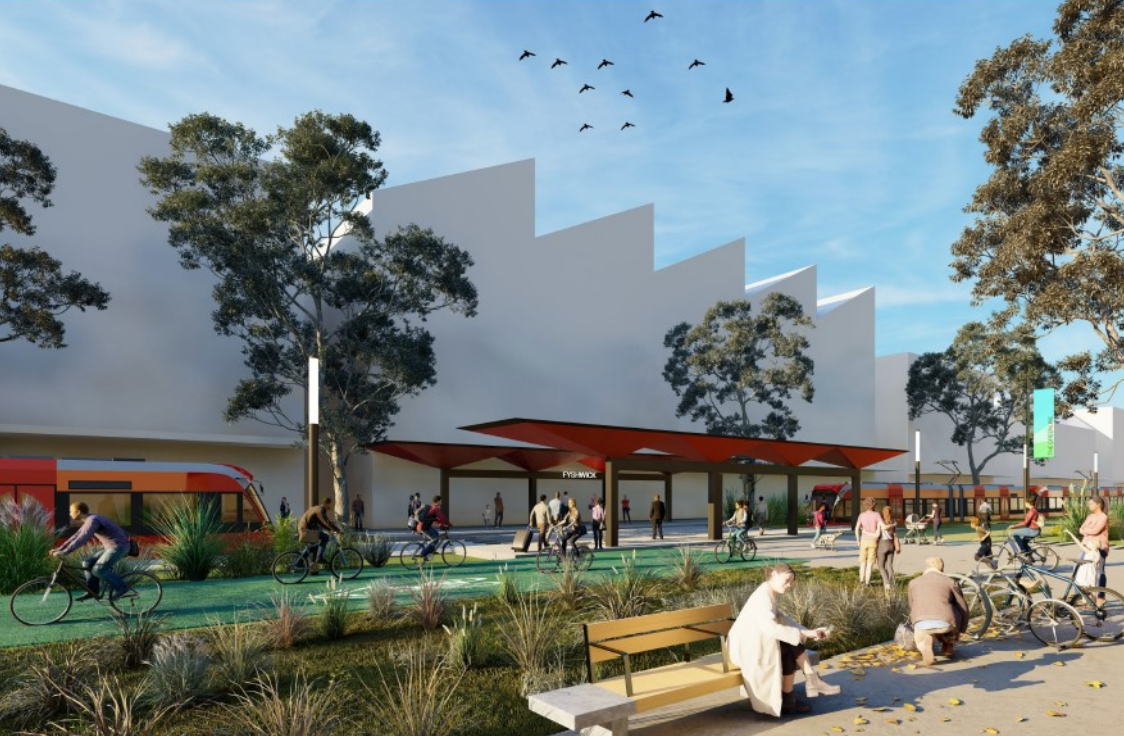
The Fyshwick light rail corridor – a clean, safe active transport link to a district with 1500 businesses and 15,500 workers.
Mr Evans said it would connect the south and north of Fyshwick and make for a much better experience for people who work and visit there.
“This will open Fyshwick right up,” he said.
He said the Greenline concept would also help cool Fyshwick, which suffers from little greenspace and, according to the CSIRO, is the hottest place in Canberra.
The concept would not just benefit the inner south and Fyshwick but be a legacy project for the whole of Canberra.
Ms Stewart said she hoped the idea would be taken up in other parts of Canberra.
The Public Transport Association of Canberra (PTCBR) backed the plan.
“We are pleased to see the local business community put forward an exciting, future-focused vision of Fyshwick that has a strong emphasis on public and active transport,” said PTCBR chair Ryan Hemsley.
“Light rail is a proven mode shifter and perfectly suited to meet the future transport demands of Fyshwick and East Lake as they rapidly transform from pure industrial to a vibrant mix of commercial and residential uses.”
Mr Hemsley called on the government to get serious about delivering the full Stage 2 extension to Woden.
“The FBA’s plan hinges on bringing light rail across the lake. It’s time for the ACT Government to knuckle down and get on with the job of extending the network south to Woden,” he said.
Independent Senator David Pocock, who has questioned the viability of extending light rail, attended the launch and offered cautious support for the project.
“I think it deals with a whole bunch of the challenges that we’re facing as a city,” he said.











